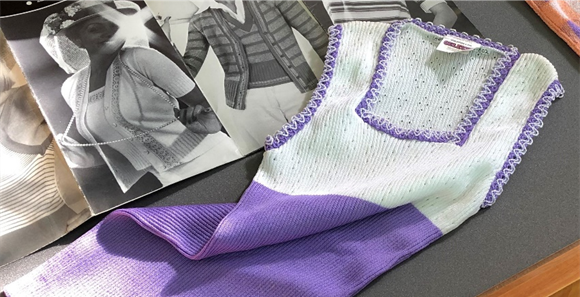In this guest blog, Claire Willetts, Collections and Exhibition Curator from Braintree Museum, tells us more about our latest collaboration to conserve an important piece of their collection and local heritage.
This autumn we are extremely excited that two students from The Courtauld Institute of Art will begin a research and conservation project on our portrait of Miss Coope by Katherine Clausen. Fundraising in 2019 through Just Giving and our partnership with The Courtauld Gallery has supported this much needed conservation project. Unfortunately, the portrait of Miss Coope needed conservation when it was brought into Braintree Museum, with much of the paint actively flaking, we are at risk of losing this portrait completely and so this project is of huge value.
Miss Coope was Francis Henry Crittall’s secretary and worked from the company’s London Office at Holborn. It is part of a collection called the ‘Old Iron Portraits’ at Braintree Museum. The collection of portraits depicts Crittall family members and company employees including factory foremen, office workers and general managers. Commissioned in the late 1920s, the series of portraits were painted by rising students nominated by leading artists from the Slade School of Art, Royal Academy and the Royal College of Art. Forty-seven works of art called the Old Iron Portraits were created and the Museum is fortunate to have twenty-seven in our collection. They were displayed in Silver End Village Hall when it opened in 1928 and some years later they moved to Crittall Social Club in Braintree.
Over the summer we were invited to The Courtauld Institute Conservation studios and welcomed one of the students, Cat Dussault, to Braintree to see the other portraits in our collection and our Crittall Windows Archive. Cat is undertaking a Postgraduate Diploma in the Conservation of Easel Paintings and she will be working with another student who will be studying for either a PhD or MA in History of Art or Curating. The conservation work will be undertaken by Cat Dussault as part of the PGDip, and the collaborative research will be as part of The Courtauld Institute’s Painting Pairs programme.
More information about the painting pairs program can be found on the website: https://courtauld.ac.uk/research/whats-on/painting-pairs-art-history-and-technical-study/
This partnership is an exciting opportunity to undertake further research and technical analysis of our portrait of Miss Coope, which will support conservation treatment and our historical understanding of this important painting within our collection. We will be sharing their findings and progress as they materialize next year.










